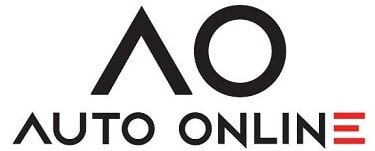- 021 928 8182

Car trade-ins are best known for convenience—that doesn’t mean you can’t get a nice price too. Explore our top five tips for getting the best price possible!
A person can sell their car for all sorts of reasons. But, if the intention behind selling your old car is just to shave off some of the cost for your new one, then you’re likely better off trading in.
Sure, selling privately may get you a higher price, but getting such a good deal requires you to put in a lot more prep work: advertising, research, meeting after meeting with potential buyers, and so on.
If you’re interested in trading in, you likely care about getting things done quickly and conveniently, rather than stressing over getting the most money possible out of your old car. That said, there are steps you can take to ensure your dealership is giving you the best price possible.
The Five Steps

Step 1: Get it Cleaned
Thoroughly cleaning the car’s interior and exterior will raise its value for minimal cost on your end. A good clean involves:
- Washing and waxing the car’s exterior.
- Vacuuming, dusting, and disinfecting the car’s interior. Remember to remove any loose mats, don’t just clean around them!
- Wiping the windows—don’t forget them!
Some people like to go the extra mile by repainting their car: don’t. Unless you know exactly what you’re doing, any repaint is going to look unprofessional, raise suspicions, and lower your car’s value. Leaving any rust visible is actually better for you in this case.
Your dealer shouldn’t be the first one to tell you what your car is worth. Get a rough idea of what your car is worth using free tools such as AA’s Vehicle Valuation Report.
You might be tempted to simply look up what used models like yours sell for to consumers, but don’t do this: both dealerships and private sellers have mark-ups that don’t accurately reflect what you’d get for a trade-in, so that info won’t be too useful for you here.
Getting an appraisal you can trust is important, as until this happens you cannot know if you have all the finances for the car you want. On that note:
- If you owe money on your old car, this must be factored in.
- If you owe more than what your old car’s worth, then prep your finances accordingly—your trade-in’s just there to minimize losses at that point.
- If your old car’s worth more than what you owe, then great! Just remember how much of your trade-in’s money is going to your bank instead of you, and make sure you have enough to cover the rest of your new car’s cost.
- If you’re unsure about what you owe (i.e. what your car loan’s immediate payoff amount is), contact your lender!
Now, we don’t want to go overboard here. For starters, you’ll want a basic service done, and for all fluids and the like to be at the right levels. Once that’s done, you need to ask yourself, “What’s worth fixing?”
It should go without saying that you shouldn’t spend more than your old car’s appraised value on fixing it. Minor dents, scratches, and headlight damages/ faults are generally worth fixing. Things like damaged windscreens and windows will vary on a case-by-case basis. Other than that, major internal repairs are best left to the dealership, which should have the connections needed to get things fixed cheaply.
Step 4: Gather Your Documents
You don’t need to bring too much paperwork, but it’s important to have:
- Proof of ownership.
- A roadworthy certificate (this costs a little to get, so factor that in).
- An NCO form (in case your dealership doesn’t have).
- Your car’s service history and other maintenance records.
- Any warranties or service plans still active on your car. These can add quite a bit to your car’s value!
If you want things done quickly, this is as simple as finding the nearest dealership with the car you want, make the necessary appointments so you don’t have to wait upon arrival, and then going.
If you’re feeling a bit more ambitious, research which other dealerships have your ideal new car. That way, if you feel the first dealership is lowballing you, you can shop around and see if another one might offer a better deal. This can mean more work, but can make you a nicer profit if you know your old car is in demand.
𝐅𝐨𝐫 𝐲𝐨𝐮𝐫 𝐨𝐧𝐥𝐢𝐧𝐞 𝐯𝐞𝐡𝐢𝐜𝐥𝐞 𝐩𝐮𝐫𝐜𝐡𝐚𝐬𝐢𝐧𝐠 𝐧𝐞𝐞𝐝𝐬 𝐜𝐨𝐧𝐭𝐚𝐜𝐭 𝐀𝐮𝐭𝐨 𝐎𝐧𝐥𝐢𝐧𝐞 𝐨𝐧 𝐡𝐭𝐭𝐩𝐬://𝐚𝐮𝐭𝐨.𝐨𝐧𝐥𝐢𝐧𝐞/𝐜𝐨𝐧𝐭𝐚𝐜𝐭/
